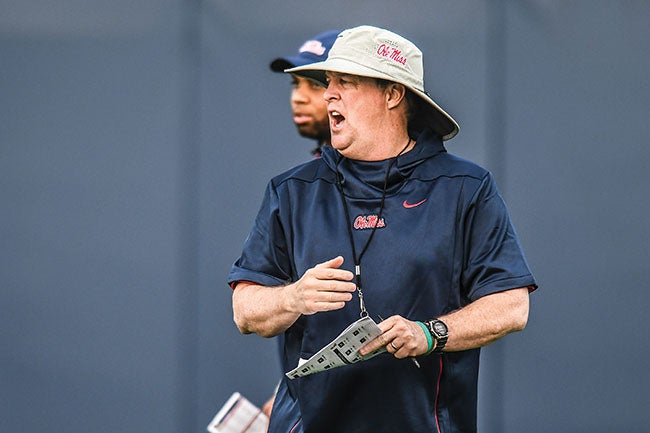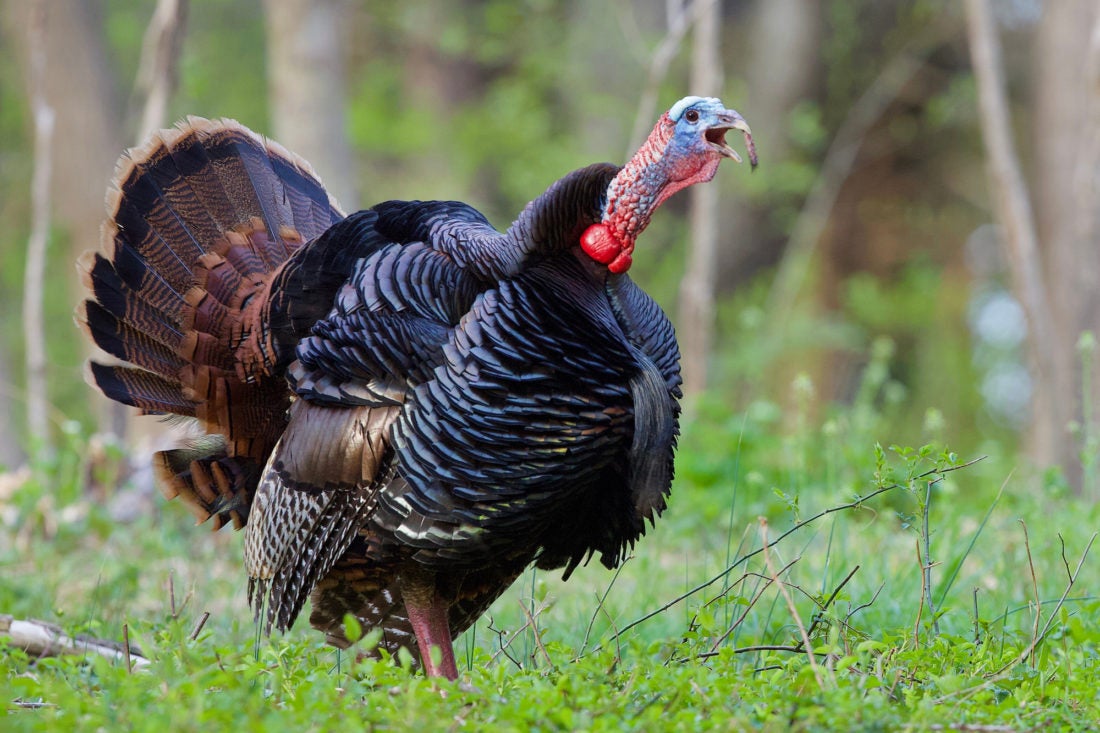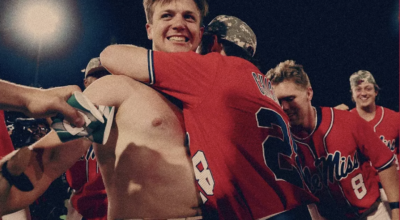Mike MacIntyre shares his thoughts about the targeting penalty
Published 2:06 pm Monday, October 14, 2019

- Ole Miss defensive coordinator Mike MacIntyre instructs at spring football practice in Oxford, Miss. on Tuesday, February 26, 2019. (Bruce Newman, Oxford Eagle via AP)
Twice in the second half against Missouri on Saturday, Ole Miss was called for targeting.
Both Jacquez Jones and Tariqious Tisdale were not just ejected from the game, but in accordance with regulations, will miss the first half of play this weekend against Texas A&M.
On Monday morning, defensive coordinator Mike MacIntyre had quite a few words to say about the two calls on Saturday, as well as the enforcement of the rule and how to avoid it.
“The thing with Jacquez was just so unfortunate. I don’t know. It was kind of a half-slide, half-hit, half-touch. It was kind of a weird deal. I understand why they called it and why they did. But I don’t know how you practice that one. I really don’t,” MacIntyre said. “The guy slid really, really late and stayed upright and he’s trying to pull off. It was kind of a weird deal. But that happens sometimes. They need to protect the players and they need to make sure they emphasize the rules. And the way they emphasize it, the way they do it, those were targeting. It’s a shame that you lose him because it wasn’t a malicious targeting situation where he launched or anything. But that’s the way the rule works, and they made the right decision on it.”
Jones’ penalty came toward the start of the third quarter. Missouri quarterback Kelly Bryant went into a slide late in a scramble. As he went down, the crown of Jones’ helmet connected with Bryant’s.
Ole Miss has a handful of practices in place to practice proper tackling and avoid the targeting rule, something MacIntyre said they work on every week. They have bags that they practice hitting in the same areas. When they tackle sleds, they aim for specific non-flaggable areas. Sometimes it’s just hard to avoid in real time. But sometimes, MacIntyre said, there may be things offensive players do to help draw the penalties.
Football is so tough… not sure what Jacquez is supposed to do here, but by rule that's clear helmet to helmet so they're going to call it targeting every single time. #OleMiss pic.twitter.com/JwhgGZkl77
— Nathanael Gabler (@nategabler) October 13, 2019
“I’m not saying it’s strategic. But there are times that there’s a late slide that are a little bit close. A lot of quarterbacks near the sidelines hold up a lot of times to try and draw that. Because if you hit a quarterback on the sidelines, there’s more of a reaction than if you hit a quarterback or receiver,” MacIntyre said. “And we work on that with our kids. We talk to them about it and we show it to them on film. You have to be really, really careful. You even see people slow up on the sideline, knowing they might get hit, then they take off. So it’s really a hard situation for a defensive football player. You’re trying to be aggressive and make sure you tackle them. There’s some tough situations, but we work on it and we go over it and there’s some drills we do to address it.”
The targeting penalty hasn’t been around forever. It was instituted in 2013 as a form of protecting players from nasty hits. For the most part, the penalties and emphasis, like Ole Miss’s, on proper tackling and eliminating dirty hits has worked. The game is different than it was a decade ago, and it is safer than it used to be. But at some point, it’s just football and it’s never going to be totally safe.
“I was kind of laughing because neither of those calls, when I played, would have happened,” MacIntyre said. “But the game’s changed, and when you’re running as a defensive player and you’re trying to be aggressive and make the play. Then all of aa sudden you have to put on your breaks and halt and stop in a split second, it’s tough. I like the way the rules are in. I understand it and I like it. It’s protection and it’s good, it’s just very unfortunate. It’s going to happen in football games.”
Where Jones’ incident occurred early in the second half, the penalty on Tisdale came much later in the fourth quarter. Despite happening thirty minutes apart, by letter of the law, they’re enforced the same. Any targeting occurring in the second half results in ejection and suspension for the first half of the next game. MacIntyre had thoughts about this as well.
“I still think, and I believe this with all my heart and soul and I’ve been preaching it. It’s absolutely ridiculous (the timing). Let’s just use Jacquez and (Tisdale). Jacquez, his hit happened early in the second half. So basically he’s going to miss 55 minutes. (Tisdale’s) happened late in the second half. So he’s basically going to miss 35 minutes,” MacIntyre said. “It’s not right. I’ve been saying it since day one, it should be like hockey. It should be a 15-minute penalty. Take the helmet off, sit him over there and when 15 minutes is off, come back in. Everybody should have the same time difference. It makes no sense. I think the time difference is absolutely wrong.”
The hockey comparison is unique. Really, targeting is a rule that’s been constantly altered since its inception. This year’s change is that, when going to review, targeting must be “confirmed” based on multiple elements of targeting. MacIntyre’s suggestions would require even more altering to the rules, but that’s nothing that hasn’t happened before.
“I like enforcing the penalty. I think the penalty is correct and targeting is correct. But the enforcement is wrong,” MacIntyre said. “You do the same crime, you should pay the same crime. I think it needs to be changed and it needs to be looked at hard. They’ve tweaked it a little bit but I think they need to tweak it further, so that one kid doesn’t miss 55 minutes and another guy misses 35. That’s not right. That’s not right at all.”





